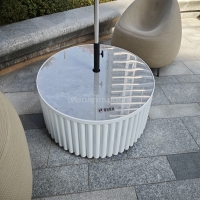Welcome to the website for landscape facilities products and knowledge.
What are the key factors in determining the optimal number of bins for a given area?
Determining the optimal number of bins for a specific area involves several critical factors to ensure efficiency, cleanliness, and cost-effectiveness. First, the size and layout of the area play a significant role—larger spaces or high-traffic zones may require more bins to avoid overflow. Second, the expected waste volume must be considered; areas with higher waste generation, such as food courts or event venues, need additional bins or larger capacities.
Another key factor is user behavior. For instance, placing bins at strategic points like entrances, exits, or near seating areas encourages proper disposal. The type of waste (e.g., recyclables, organic, or general trash) also influences bin allocation, as separate streams may require dedicated bins.
Finally, maintenance frequency matters. Areas with less frequent cleaning may need more bins to prevent accumulation, while well-serviced locations can manage with fewer. By balancing these factors, you can optimize bin placement for maximum utility and hygiene.
Related search:

Recommendation
Round metal tube border design table with tempered glass or granite countertop on the top.